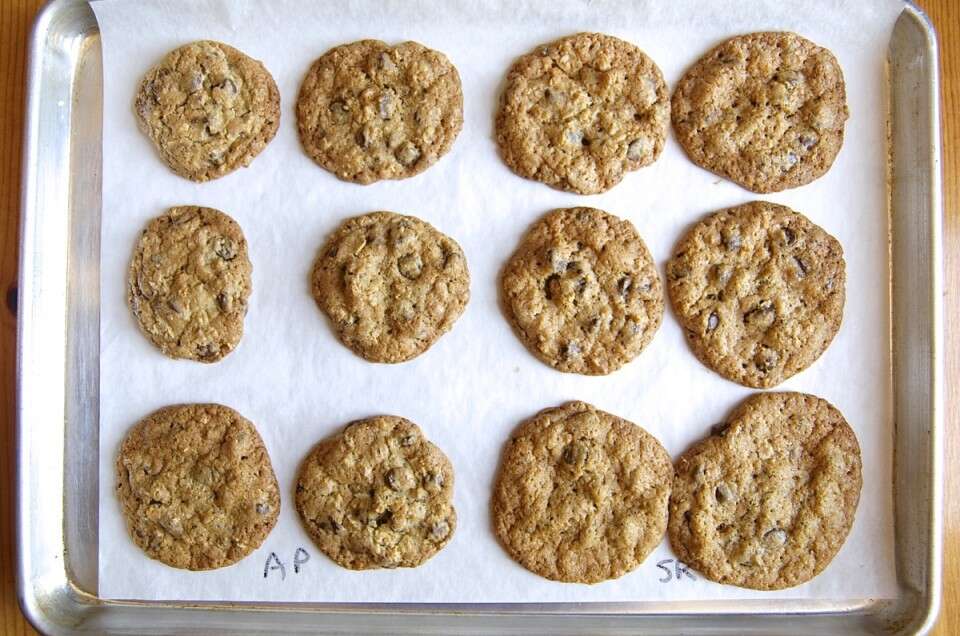A Handy Guide for Parents: Can Self Raising Flour Replace Plain Flour?
Glad to see you here, enthusiastic parents! We know how daunting it can be when you’re in the middle of baking and suddenly realize you’re out of a specific type of flour. Today, we are exploring a common baking quandary: Whether self raising flour can replace plain flour. Let’s jump right into our flour-filled discussion!
Understanding The Basics: Plain Flour vs Self Raising Flour
What is Plain Flour?
Plain flour, also known as all-purpose flour, is the most basic type of flour available in the grocery store. It is versatile, adaptable, and simply perfect for making a wide variety of items, from bread to cakes and pastries. Its versatility comes from its protein content, which is ideally balanced to perform excellently in most baking recipes.
What is Self Raising Flour?
On the other hand, self raising flour is essentially plain flour that has already had leavening agents (usually baking powder) added into it. This type of flour is typically used in baking recipes which require expansion or rise – think pancakes, muffins, and certain types of light and fluffy cakes!
Can We Substitute Self Raising Flour for Plain Flour?
In a nutshell, yes, you can substitute self raising flour for plain flour! On the flip side, yes, it also requires a bit of bakery gymnastics that we’ll be going through in this guide. However, it’s important to note that because self raising flour includes a leavening agent, you will need to adjust any additional leavening agents in your recipe accordingly.

How To Substitute Self Raising Flour for Plain Flour
Measure The Right Amount
For every cup of plain flour that your recipe calls for, you can use an equal amount of self raising flour. So, if your recipe needs two cups of plain flour, just replace it with two cups of self raising flour. Simple as that!
Adjusting The Leavening Agents
This is where your baking acumen comes into play! As self raising flour already contains a leavening agent, you’ll need to reduce the quantity of the leavening agents (like baking powder or baking soda) that your recipe calls for.
A usual rule of thumb is that for each cup of self raising flour used, you can deduce 1.5 teaspoons of baking powder and 0.5 teaspoon of salt from your recipe.
Remember, baking is as much science as it is an art, and measurements really do matter!
The Final Results: What To Expect
While you can indeed substitute self raising flour for plain flour, it’s important to remember that the final product might not be exactly as you’d expect if you’d used plain flour. Derived from its name, self raising flour is intended to create baked goods with a lighter, softer texture.
So, if you’re baking bread or any recipe where a denser texture is required, plain flour would be the best bet. Meanwhile, if you’re seeking a lighter, fluffier end result – such as cupcakes or pancakes – then self raising flour could wonderfully serve its purpose!
In Conclusion
There you have it parents, your crash course in comprehending the subtle art of interchangeable flours. Remember, it’s all about understanding the differences between plain and self raising flour, adjusting your ingredients accordingly, and being ready for fairly softer end results! Happy baking!
Can Self Raising Flour Replace Plain Flour?
Absolutely, you can! There are a few things to keep in mind, however, so let’s dive right into the top five things every parent should know when considering this substitution.
1. Adjust the Rising Agent
Understand the Difference
You need to know that self-raising flour includes a raising agent and salt, unlike plain flour. Therefore, when baking with self-raising flour instead of plain flour, your baked goodies will automatically rise.
2. Omit the Baking Powder and Salt
Take Out Additional Leavening Agents
Should your recipe call for baking powder and salt along with plain flour, and you’ve decided to switch it up with self-raising flour, you’ll need to omit these ingredients. Take it easy, your treats will still rise with the inbuilt leavening agent!
3. Experiment Gradually
Start Small
Swapping out different flours can sometimes change the texture and taste of your dish. It’s best to start on a small scale to prevent a big flop. Every dish reacts differently, so make the change gradually and note the resultant differences.
4. Beware of Over-Rising
Keep an Eye on Your Dish
Since self-raising flour has a rising agent, your dish may rise more than intended. This can potentially alter the final product texture or cause an overflow in the oven. It’s essential to keep a vigilant eye on your dish whilst it cooks.
5. Remember It Won’t Work For Every Recipe
Choose Wisely
Though most baking recipes can handle the switch, there are exceptions. Flatbreads, Yorkshire Puddings, and any other recipe that relies on eggs or steam for their rise may not fare as well.
Switching from plain to self-raising flour can be a game changer, potentially making your baking life significantly more simple. Stick to these five key principles, and you’ll have moist, fluffy cakes and biscuits in no time! Happy baking!
For more great articles please see here. For more information see here
Disclaimer
The articles available via our website provide general information only and we strongly urge readers to exercise caution and conduct their own thorough research and fact-checking. The information presented should not be taken as absolute truth, and, to the maximum extent permitted by law, we will not be held liable for any inaccuracies or errors in the content. It is essential for individuals to independently verify and validate the information before making any decisions or taking any actions based on the articles.




